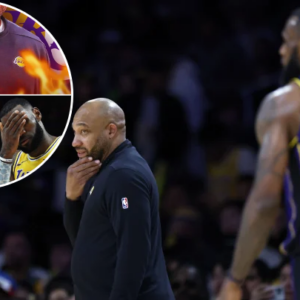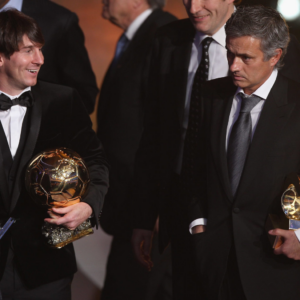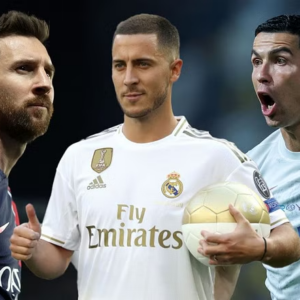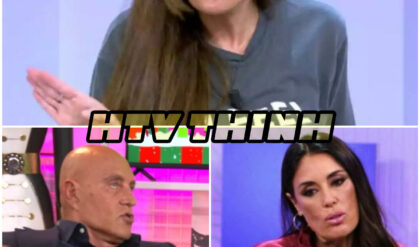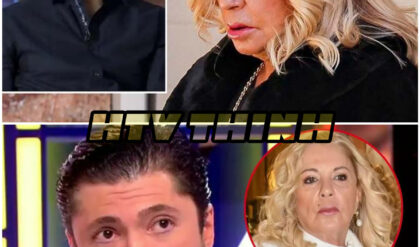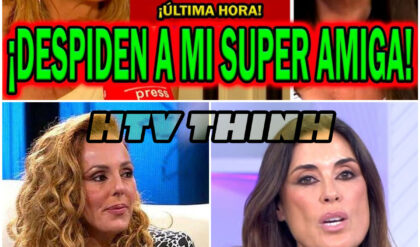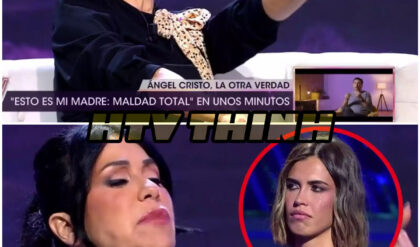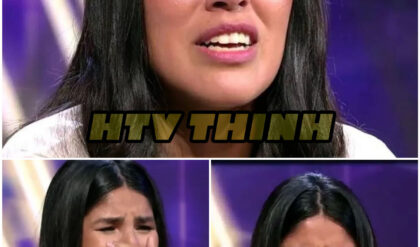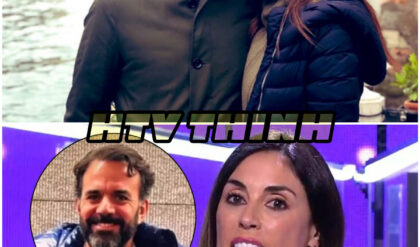Oh, well, the night is long, the beads of time pass slowly,
Tired eyes on the sunrise, waiting for the eastern glow ‘– Led Zeppelin, The battle of evermore
Hello folks, new analysis, chapter 1110: horror pentaptych.
In essence, the Greek definition just cited naturally refers to Gorosei, one of the convenient labels that have allowed us to explore vast and contradictory terrain with a surgical eye for several months: Egghead.
1110 intertwines my thoughts. On the one hand, the mind craves meaningful revelations; on the other, I’m enjoying every single discovery. I remember when I would have given gold to know any detail about the Gorosei, then I think about today.
And I smile.
I can’t decide what fascinates me more: the genesis of a shattered past or the analysis of the consequences of that past, which will lead to a new and more acute social consciousness. To top it off, I never expected to see a Gorosei on stage, let alone the entire parterre de roi.
It’s Elzeviro time
Syncretic light
Therefore, the mini adventures unfold again in a sort of semi-parallel (keeping in mind that the proposed events take place about a month before the current timeline). A series of questions arises spontaneously: has Wano modernized its archaic information system? Will we see Momonosuke & company’s reactions to the events involving their friends? Are there any relevant facts regarding two Emperors who, by now, could be considered the equivalent of my nickname? And what highlights will the Kurohige experience after Caribou releases the news?
My secret hope, already manifested during the confrontation between Kuzan and Van Augur (and the subsequent kidnapping of Pudding), remains unchanged, especially now that we are approaching the final narrative arc. It would be a dream if the mini-adventures had a direct connection to the main plot. I’m not suggesting that they should reveal anything in advance – not at all – but rather enrich our understanding of the events already known in the chapters, offering us different perspectives. This would be a really exciting narrative element.
And heck, extremely helpful! (Yes, Capone’s adventures particularly tried me).
In fact, the known guideline is called the horizontal plot, a friendly terrain, an objective substrate that – over time – protects us from narrative forcing and ambiguity. All this while Oda sensei moves a precise red check . In the strategy game, this term indicates a definitive move made by the knight, which is protected by a pawn. It is a very treacherous maneuver, since the knight directly threatens the opposing king without itself being threatened by immediate capture. For writers, however, as my literature teacher taught me, it is a device in which a main character or narrator provides false or misleading information to the reader, creating an illusion or misunderstanding around a situation or series of events.
Kizaru, the fate of the Marines if they became aware, the nature of the information disclosed by Vegapunk and the social impact that would result, together with the reaction to the truth. We’re not talking about a summarily described ploy like in the Ohara underwater books.
We are talking about the Genesis of the Gran Casino.
And, if you remember the cult film, in ‘V for Vendetta’ just one touch is enough to start the entire domino falling.
It makes me smile that Vegapunk is visually drawn with traits of Einstein and Newton, because the transition from Newtonian principles to Einstein’s theory of relativity represent the chapters of this saga, which provide a solid but incomplete basis for understanding the truth. In this sense, the theory of relativity can be seen as the definitive statement to mankind, offering a more complete and accurate vision of the nature of gravity and the historical-social fabric. Theory that could be compared to the climax or final resolution of the saga itself. It’s like the moment when all the narrative threads are finally woven together, revealing the fundamental truth that… radically changes our understanding of the world.
Ladies and gentlemen: chap. 1110…
The originals
‘ From Cain were born all evil descendants: giants and elves, evil demonic creatures and gigantic monsters: those who fought God, in the time beyond time ‘
– Beowulf
Ready for a leap into the dark?
Before continuing, it is important to point out that when I propose a theory, I do so in a clear and transparent way, as in the case of my idea (developed for several months, in unsuspecting times) on the pantheon of ancient divinities, and the classic final war between evil it is good. In this context, I will provide all the information I have gathered about the origins of the five revealed creatures and also offer my own interpretation. I will also add cross-cutting information about the beings in question, as some analogies are drawn from cultures other than Japanese. Finally, it is essential to keep in mind an important detail that I often remember: Oda only partially draws on the myths and adapts what is necessary based on his ideas. For example, Stussy has the appearance of a Succubus and vampiric powers , while in the ancient myth the Ame no Habakiri kills the Yamata no Orochi, however in One Piece he is defeated with a common sword by Denjiro. Keep these considerations in mind as we proceed. This disclaimer was necessary.
The arrival of the stars is announced by black lightning, an element almost always associated with Haoshoku , the haki of the conquering King. This could open up a mini debate, but I’ll skip it. It is an element that appears in very different situations, black lightning even manifests itself in Garp’s techniques in Hachinosu, but it was never said to possess such ambition. It is almost a sign to underline the desire to declare the presence of an absolute power, and here contradictory elements already emerge, if we only think of Nusjuro’s blade. However, rest assured, I will address this reasoning in more depth when we get to Zoro-boy.
Remember Howard and the Fate of the World ? A wonderful fantasy parable, and simply gorgeous film. If you’ve seen it, think back to the Occult super-sovereigns of the Universe (what a sober name, and not at all high-sounding!), specifically at the moment in which they are arriving in our dimension. Well, I believe this is why in Mary Geoise we see one large pentagram; I imagine the Stars entering together, obviously in human form, so one was enough, and transforming along the way, implying the presence of as many for their number, given the monolithic dimension of the creatures. Even the slughorn is impressive, perfectly embodying the demonic spirit revealed by Saturn, a classic horror icing on the cake.
Now, let’s analyze this grotesque miscellany:
1) San Marcus Mars, ‘Itsumade’: it is a ghostly bird that stands out in the vast Japanese collection of yōkai, precisely in Toriyama Sekien’s Konjaku Gazu Zoku Hyakki, published way back in 1779. According to the ancient chronicles of Taiheiki, around autumn of 1334, a fatal epidemic was spreading its veil over the population, and almost every night, a mysterious ghostly bird made its sinister appearance at the top of the Shishinden, imploring with anguished wails: ‘itsumade itsumade’ (until when? when? ), unleashing terror among those present. In the stories of literature relating to the Yōkai, starting from the Shōwa era, the Itsumade is sometimes described as a disturbing figure that rests next to the bodies of those who have met their end in battle or by hunger, whispering ‘itsumade itsumade ‘, almost as if to ask: ‘ How long will this corpse be left here? ‘. Or he is depicted as the vengeful spirit (onryō) of those who have met a tragic end, transformed into a dark bird with dark wings.
I have read various legends, and I can provide you with two reflections: A) In any case, his presence is considered sinister, and he is believed to bring misfortune to those who cross his path. He is often described as a vengeful or evil being, whose sole purpose appears to be to cause harm or cause fear. In many tales, he is considered a danger to be avoided at all costs, as his presence is often a prelude to impending disasters or nefarious events; B) One legend in particular tells that an Itsumade spread terror and destruction in a certain area, causing fear and desperation among the local population. However, one day, a brave archer set out to defeat the evil creature. After following the directions of a wise elder, the archer managed to ambush Itsumade. Taking advantage of the creature’s moment of vulnerability, the archer shot an arrow with deadly precision, striking Itsumade and ending his reign of terror.
The Norse myth of the giants against the gods, throughout the chapter we see archers armed with giant bows and arrows (one even in the foreground), it would be nice if Mars was shot down by one of them, obviously not killed (let alone), but at least it would reflect the myth.
In a legend there was reference to his rapid recovery, as if it were a regeneration, I tell you this for intellectual honesty, I won’t report the source because it was just a short paragraph without a contextualized date or prefecture, but if it were true: it would confirm my theory that the stars use their powers on each other. I put my hands forward, calling it a flight of fancy is an understatement. But my job is also to examine every possible aspect.
2) San Topman Warcury, ‘Houki’: first singularity reported in the previous disclaimer, this is a Yokai, yes, but called Fengxi and belonging to Chinese mythology. A fascinating example of how mythological creatures can be used to represent moral concepts or social warnings. Fengxi, described as a boar-like demon, embodies unbridled violence and greed. His insatiable nature which leads him to ravage land and devour without distinction is a powerful symbol of the destructive effect of such vices. And this is very reminiscent of Saturn, I’ll make the parallel later. The fight against this creature shows a recurring theme in mythology: the control of chaos and destructive forces through power and authority. Something that the Gorosei themselves have unduly appropriated.
In some legends of Chinese mythology it is curiously reported in a positive light, but the myths that reflect its dark side all coincide on some points: uncontrolled violence, insatiable appetite and unbridled aggression.
3) Saint Ethanbaron Nusjuro, ‘Bakotsu’: the second singularity. As told in various tales, the yokai known as Makotsu, literally translated as ‘skull horse’, is a creature of Japanese folklore that embodies the darkest and most disturbing aspects of the spiritual realm. Although less famous than other yokai, the Makotsu exudes a history steeped in symbolism and cultural interpretations. Its depiction can vary, but is often associated with the image of a horse skeleton or an equine skull enriched with ghostly or supernatural attributes. There are no definitive images of it; at most, one can find some depictions of a rotting horse exuding fetid miasmas. However, if you search for the word ‘Nuckelavee’ and scrutinize the images, you will see a striking resemblance to Nusjuro. Ok ok, the Gorosei doesn’t maintain a fixed horse head, but moves fluidly from one shape to another. In any case, remember the disclaimer on Stussy and Ame no Abakiri.
Without forgetting that the Celtic information reflects the Japanese one:
According to legend, the Nuckelavee was created by the god Odin, who was trying to create the perfect creature. However the being was so evil that he had to be banished to the depths of the sea. The creature is said to be skinless, with a horse and a human head, and is known for its ferocity and wickedness. It is believed to be responsible for many of the natural disasters that occur in Orkney, including storms, droughts and plagues.
My opinion? I think the origin is classic Japanese Bakotsu, but I assume Oda created a hybrid form, taking inspiration from the Nuckelavee, not so much for the myth itself, but for the skeletal human-equine crossover. As an author, he has access to legends from all over the world and is not required to believe their ‘ lore ‘ in the slightest. In other words, he has thousands of inspirations at his disposal which act as an extremely variable canvas.
4) Shepherd Ju Peter, ‘Sandworm’: this mysterious being has no counterpart in the vast pantheon of yokai known so far. It could be a tribute to Dune or even the wonderful Tremors (monstrously forbidden dream, a pirate drawn like Kevin Bacon screaming at Ju Peter: ‘ Can you fly?! CAN YOU FLY, HEAD OF…?!’ ). From a mythological point of view, the analogies are many: from Amphesibena (although this should have two heads, so the comparison does not entirely fit), to the Ilghoi Khorgoi up to the Jewish Shamir. Regarding the latter, although he was in the service of King Solomon, he was still a gift from the King of the Underworld. Indeed, we face a satisfactory information gap, so I will avoid wasting time trying to identify it. We can only observe its ferocious nature and reflect on the fact that such an important character would not have disappeared in such a banal way.
5) San Jaygarcia Saturn, ‘Gyuki’: I don’t waste your and my time, in a recent article I outlined the entire history of Ushi-oni, I’ll point it out below
Earlier I announced a parallel with Warcury’s unbridled appetite, in fact the basic nature of these creatures would seem to have common denominators. Towards humans in particular.
Chapter 1094 Analysis
And this is combined with a disturbing detail to say the least. Saturn’s attitude has never sat well with me. I reflected on it after his sentence: ‘ Put yourself in my shoes, how could I ever understand… the feelings of an insect?’. So in the relevant chapter I made an observation on the matter
Analysis chapter 1103
First, there is a contradiction in practical terms.
Luffy’s Hito Hito is the Nika model, while Sengoku’s is the Buddha. Only Chopper has the human-human type, and as we know, no two fruits are alike. Ergo, could the difference lie in the ‘races’?
Let’s consider the common models of the Dalmatian, the dachshund, the jackal, and several mythological ones (such as Yamato and Katarina). In summary, the Inu Inu category seems to consider species. The Stars have always shown different ethnic connotations, from Russian to Japanese influence. If they were originals who remain in human form (like Morgans, who do exactly the opposite), there would be a category of Hito Hito that works on the canis model. Or it’s the capacity of a single fruit, and this would obviously transcend metaphysics, but, we see it done in both Luffy and Bonney by now.
Time will provide us with the answers.
Are the Gorosei individuals who, once they acquired certain powers, became victims of delusions of omnipotence? Or are they the remnant of an ancient era, whose nature, if revealed, would be the object of hostility and persecution? Hatred fuels hatred, and we don’t even know the name of the Ancient Kingdom, whose eventual revelation – coincidentally – is the source of anger, anguish and frustration on the part of the five Stars. Not to mention the gray eminence that sits on the throne. No people, nothing revealed or revealed , it’s just that instinct makes me consider this possibility too.
The Gorosei are living beings, not projections, Saturn bleeds and suffers pain, we saw him eating on the way to Egghead. Whether caused by powerful Haki, or prior to a transformation, the Stars have notable and clearly visible scars. They can be injured, then killed. Furthermore, they are solitary and isolated beings, lacking empathy or compassion. They feel no remorse for the pain inflicted on their victims and act solely for their own benefit. And Egghead has shown us an indelible fact: they are forces of darkness that feed on human terror and pain, with no regard for the lives they destroy in their path. Imu then, it’s a mask. For him, maintaining secrecy is a top priority, and he is willing to commit any atrocity to do so. But despite his efforts, he is constantly threatened by the emergence of the truth, for he knows that once the mask falls, his reign ( and his intentions ) may come to an end.
In fact, nothing moved them except an upcoming revelation.
It is useless – for the moment – to investigate further, the author takes what he likes from the myths and bends them to his literary tastes. In fact we can note a definitive detail, in no story do these creatures collaborate or have events experienced together, they only share: malevolence and appetite for destruction. Besides perhaps a curious trait that these beasts have in common. Several of them became demons out of revenge, transcending a previous humanity.
In the absence of decisive elements, I have tried to paint as accurate a picture as possible to provide you with the best perspective. In conclusion, whether they are humans or originals , the Stars are disturbing figures who represent evil in its darkest form, although their obsession is typically earthly.
Perhaps, the last memory of a lost humanity?
The chalk years
‘ The line that divides good from evil cuts the heart of every human being. And who is willing to destroy a piece of their heart? ‘
– Alexander Isaevich Solzhenitsyn
The Marina, the Gorosei, the frontier dome and Marcus Mars. Here’s something to think about, let’s go!
Despite having carried out a series of illogical actions over the years (but let’s remember that it is Imu who pulls the strings and has a precise plan), the Stars attack with precise commando tactics. They defined the roles well. Apart from Warcury, of whom we do not see any action, Saturn and Ju Peter immediately engage Nika as a team, while Nusjuro adopts a particular strategy: preventing the Mark IIIs from fighting, rather than destroying them.
Marine (Communication): Report!!! Fallen Pacifistas have a partial blockage of the transmission system to the brain due to frostbite, making them temporarily unable to fight!!
Does it make a difference? Hell yes, if it makes a difference.
They don’t just want a slice, they want the whole pie. Obviously, it is a high-performance military criterion: blocking the most difficult enemies, to have a clear field. However, I am struck by the cold lucidity of Nusjuro, who blocks the Marks and lets the Marines recover them.
His transformation reminds me of something: in the Shingeki no Kyojin universe , mutation is one of the most distinctive and fascinating elements of the series. The fusion of human and giant, with nerves, tendons and muscles intertwining, adds a level of drama to the narrative. Here, however, we are not in the presence of intertwined surfaces and fabrics, which give the giant the ability to take command (and symbolize the bond to the creature itself); let’s see something more… arcane. That is, the star literally emerges from the running horse, exactly as a person’s face would emerge from the surface of the water. This suggests not only an absolute mastery of the fruit, but also a perfect cohesion with it.
The tactic is not random, the samurai (can be clearly seen in the overview from above) is carrying out a diversionary maneuver… to divert the Itsumade’s attention and facilitate its close support to the Frontier Dome. They are not attacking at random, they do not invest everything in front of them, the coordinated attacks are a simultaneous decision of different elements, which acquire such cohesion and organicity as to make them schematic:
keep Nika at bay (Ju Peter, Saturn)
decimate the military front (Nusjuro)
stop message (Mars)
In chapter 1009 we witness this conversation:
Warcury: If only we had an idea of where the transmission originates…
Ju Peter: It must be from Egghead’s Labophase… there is no other solution!!
Warcury: But now he is protected by a barrier…
The insane virulence of the five has a precise meaning, they want Mars to destroy everything inside the Labophase because they understood that the communication was protected. Therefore, what appears to be naked functionalism actually turns out to be a rather refined plan. Further consideration, starting from the assumption that I have already extensively described the admiral’s principles and appendices, whoever can cross the FD with impunity remains Kizaru, and perhaps Mars. You interpret certain nuances with the instinct of the reviewer, but the heart of the reader remains. Although feeble, hope remains within me, I don’t expect the iconoclastic fury of an awareness, a gradual catharsis is enough for me.
One question would be enough, plain and simple.
It doesn’t matter whether Kizaru addresses it to himself or to the Gorosei, the important thing is that it is pronounced. Something like this: ‘ If we’re right, why be afraid of Vegapunk’s message? What harm can the words of a good man do? ‘. Imbued with a sober but severe pietas , for me it would be enough for the light to become aware of its role… precisely in the presence of darkness. Egghead, in his morality, is the main moment for the Navy’s Do the right thing . At least his incipit.
The reactions of the infantry and of Bluegrass itself are emblematic. What the heck are they seeing? Naturally, I am referring to the pentacles, a further melting pot of different origins and cultures, European magic in a predominantly Shinto context. The only notable difference is the vice-admiral’s expression, clearly terrified, while that of the infantry remains dismayed. In any case, the Stars have – for the moment – put aside pride and caution. Saturn detonated the head of a private who had allowed himself to look at him in his awakened form, while Nusjuro dashes in front of everyone carrying out his task, regardless of the spectators.
Some see it, others don’t, but after the horrors of Lulusia and God Valley, can we really believe that the World Government is capable of clemency? The basic decision will be to execute anyone below the rank of officer on the spot (Saturn docet). How will supporters of justice react to this choice? And how will the Marines react after the Vegapunk revelation, once they realize (probably) that their idealism actually allows and conveys tyranny and genocide? It is important to consider the two sides of the coin, represented by Doberman and Doll: I personally believe that the answer lies in the nature of these two officers, who share the same spirit but interpret justice in different ways. At least as far as I’m concerned.
On the surface of consciousness, marines believe they live the noblest chromatic tones of good, only to discover, after many years, that the hand that traced their history was apocryphal. As if a faceless shadow had written the years of their life in chalk, imprisoned in a false perception of reality.
But fortunately, on the faded lines of the blackboard, there is space to erase errors and rewrite a new truth.
Damn, I was wrong folks. The stars actually have one exquisitely human emotion left: fear.
Bushido point
‘ We will meet in the place where there is no darkness. ‘
– George Orwell, 1984
The scene of the giants is as beautiful as it is emblematic, full pre-Norse harmony. I spoke to you about the meaning of the battle between giants and gods in this context last week. Here we can add some details:
seeing those three idiots reunited: it’s good for the heart
the link between giants and Nika is now obvious (they even have attacks on the topic)
Ju Peter ( er worm , to his friends) doesn’t leave the scene so easily
Let’s start with Zoro’s clear tiredness. The swordsman acts out of pride, but there is no mention of pride or superiority. He can’t stand: something is wrong. Lucci can be as strong as he wants, but compared to the CP, Zoro is a massacre. He didn’t struggle like that even for King, a destructive force totally superior to the Leopard. The first thought goes to Enma, who has not completely mastered it, and we know well the huge quantities of Haki (therefore of physical-spiritual energy itself) that the katana requires. Chopper had warned him: the medicine would have side effects. Obviously we immediately think of the effigy of death seen by the swordsman, but beyond that… we have never seen the terrible effects feared by the doctor. Is he suffering them now? Zoro is clearly exhausted, and that’s absurd in itself.
Returning to Enma, is it a coincidence that the sword that flies out of his grasp is the very one that constantly drains him of every ounce of strength? And it is without a doubt Enma. Because the menuki (ornaments) and the tsukamaki (handle wrapping) are identical, as is the tsuba (blade guard). Initially I thought it was Zoro’s strategy: throw the sword, then interrupt the degenerative flow for a few moments, gather your strength and inflict the blow. But, I do not think so. I’m thinking of something more radical.
I believe Zoro wasn’t using his max to keep from collapsing.
The swordsman does not act out of pride; it is truly the last bastion in defense of the crew. It can be seen in the straightening out of Chopper, ‘kidnapped’ by Foxy’s crew, in putting up with everyone’s insults in order to let reason prevail (as in the decision not to go to Bibi), in the resoluteness of the moral warning ‘ nothing happened… nothing ‘. I could mention many other occasions: he is not the type who would put his ego before his teammates, ever. My impression is that he was aware of not being able to impart the necessary power into the techniques: A) so as not to faint when his teammates needed him; B) maybe even to avoid losing one’s skin.
Let’s support this thesis, Zoro is perfectly aware of Enma spinning on his head, Jinbe arrives and hears Sanji (ok, obviously insulting him) say ‘ you’re endangering your companions ‘, here’s the trigger, equip yourself with the chapter and read the rest . While he is dodging Lucci’s blows with his head, Enma is clearly falling back towards him (top left), in the next panel, the spiral kinetic lines indicate that he caught it on the fly, and passed to the Santoryu : he performs the Kokoba – Madaragari . Making a nice Lucci Sashimi, moreover.
Is it possible that no one noticed the next three panels? Jinbe is seen with a worried expression, when usually he would have smiled at a teammate’s victory. And in the next one… Zoro is clearly collapsing to the ground: this is why he hadn’t put any power into his techniques until now. Whether it was the side effects of Chopper’s soda, Enma extracting too much Haki, or something else , Zoro wasn’t fighting as hard as he could to keep from falling unconscious.
And here I would be sorry, considering the presence of Nusjuro. In chapter 1094, Luffy, Zoro, Kizaru and Lucci are clearly seen sensing Saturn’s Haki. What is now felt by the swordsman and the CP is what we could define as the integral Haki of the Gorosei. Nusjuro then, clearly has a Kitetsu; the Tsuba (the blade guard) and the Tsuka (the handle, the grip) have exactly the same shape, patterns and design. This is no reason for misunderstanding: they are the works of a single master gunsmith. This is not tradeable.
But I want Zoro awake, for his ability to sense swords. And rest assured, I don’t care in the slightest that he has who knows what lineage or titles (be careful, some things are already well outlined). I’m interested in history.
Lily lost track of the PCs, and we know that someone combined the knowledge of the Nefertari family with the indestructible technique of the Kozuki, personally, in my opinion it was Joy Boy. So, in real time, we have the new queen of Alabasta (D unaware), Wano blood in the Mugiwara (obviously Zoro), and a Gorosei who has origins from the same country, or at least has had direct and active contact. Absolutely yes, because, if you notice, twice, Nusjuro does not brandish his sword by slashing wildly. But he extracts, strikes, sheathes, using the exact same Iaijutsu (居合術) technique, the trademark of the Mugiwara, i.e. Ittōryū Iai Shishi Sonson.
There is no doubt that Nusjuro is a samurai, or that, at least, he had direct dealings with them. Blackbeard will soon know that Pluton is located in Wano, Bibi is with Morgans and Wapol, Vegapunk is about to shake the world. Compared to what will happen: writing hell is nothing but a dull synonym.
From a technical point of view, the old man’s blade is soaked in Haki, it was appropriately shown to us during the cleaning phase, in short: it is not a Kokuto . Which places the star within the mugi’s reach (if he recovers, if he wakes up, if he is sober). Zoro is in that transitive phase where the samurai borders on the sublime, and constantly experiences the transience of life. The ephemeral side of him. It is on the road that leads to supreme blackening.
You know what? Maybe this too is wearing him down: no one has blackened three swords at once.
The fact is that the Gordian knots are tightening, and Alabasta, Wano and Mary Geoise have old, very old… unfinished business.
I’ll link you to the King ‘s video , hear what he has to say about the 5 deputies, and we’ll talk about it again tonight!
Diabolus in metric
I hope I have entertained you and pushed you to reflect.
Power, manipulation and the fight for the truth.
Seven bells are missing to shake the world, and the most intriguing hypothesis would be to bring the people closer to the slaves, making the ‘D’s of their destiny known, thus indicating a new era of change, of hope.
The nature of the Stars adds a touch of horror and ambiguity, underlining the blurred boundary between good and evil, throwing us into the heart of a story of rebellions and traditions. Where the obsession with power creeps into the plot, depicting a world in which domination becomes a game of deception.
Egghead seemed loaded with blanks. Instead, Oda takes us into a whirlwind of action, mystery and a splash of madness. It’s as if Raymond Chandler met Salvador Dali for a night of drinking and shooting.
Let’s enjoy the ride, folks
‘ Oh, dance in the dark of night,
Sing to the morning light.
The dark Lord rides in force tonight,
And time will tell us all ‘– Led Zeppelin, The battle of evermore
News
Test đẩy bài từ cms
Test đẩy bài từ cms, xóa sau khi dùng.
HOT BELL RINGING: LeBron James may have just revealed ideal Darvin Ham replacement for Lakers
It is no secret that Darvin Ham’s future with the Los Angeles Lakers might be up in the air with how the 2023-24 season has played out. Despite getting mostly healthy seasons from LeBron James and Anthony Davis, Ham…
Stephen Curry Explains How Social Media Influenced His Pregame ‘Tunnel Walk’ Aesthetic: “All Those Eyeballs on You”
SAN FRANCISCO, CALIFORNIA – MARCH 18: Stephen Curry #30 of the Golden State Warriors points to his teammates during their game against the New York Knicks in the second half at Chase Center on March 18, 2024 in San Francisco,…
How name dropping Lionel Messi saved an Israeli grandmother from Hamas
A man walks behind a glass with bullet holes following the deadly October 7 attack by gunmen from Palestinian militant group Hamas from the Gaza Strip, in Kibbutz Nir Oz in southern Israel Nov 21, 2023. PHOTO: Reuters file TEL AVIV — “I’m…
Jose Mourinho reveals if he wants to manage Inter Miami’s Lionel Messi
Jose Mourinho has now commented on if he would one day like to manage Inter Miami superstar Lionel Messi. The former Real Madrid and Chelsea manager has often let his opinion known on the Argentine forward, with Mourinho clearly a…
Eden Hazard names who is the greatest between Lionel Messi and Cristiano Ronaldo
Eden Hazard has weighed in on who is the greatest player of all time between Inter Miami’s Lionel Messi and Portuguese international Cristiano Ronaldo. The debate is one that almost feels as old as soccer itself, with every support firmly…
End of content
No more pages to load
